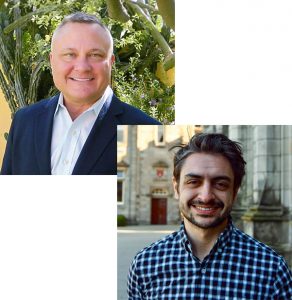 By Richard Tollefson, Founder and President, and Michal Tyra, Director of Client and Community Engagement at The Phoenix Philanthropy Group.
By Richard Tollefson, Founder and President, and Michal Tyra, Director of Client and Community Engagement at The Phoenix Philanthropy Group.
Appealing to aspirational and transformational donors requires moving beyond typical prospect development – moving beyond simply looking at people and place – to purpose.
Ask any competent development professional how to enhance fundraising performance, and they will tell you to work prospects from the inside-out. Typically, this involves focusing on people– those within an existing circle of supporters who may not currently give or who have capacity to give more; and place– prospective donors who will give because it is a solid investment in the social and economic development of the area they live in or care about. Former clients or board members, regular low-level givers, community leaders and local stakeholders all potentially fit within these categories.
In most cases, this conventional wisdom still reflects best practice. Grasping at major philanthropists who have no connection to an organization can be a major waste of time and resources. “Chasing whales,” as some call it, has been derided as a folly typical of the young, unexperienced development officer or new board member who is hoping to be the next to catch the eye of the Gates Foundation or Oprah Winfrey.
Despite this, the changing nature of philanthropy has given rise to a new breed of donors; ones who cast aside many typical drivers of giving in the name of greater impact and fulfillment of their philanthropic agendas. These aspirational and transformational donors are not confined by personal experience, organizational loyalty or geographical affinity. Rather, they are driven by purpose. Regardless of connections or location, these donors will support innovative, industry-leading programs that are making a difference, having an impact, and are scalable and sustainable beyond their current bounds.
Contributions from these donors are typically both large – generally defined as philanthropic investments that have a major and lasting impact on an organization’s ability to fulfill its mission – and rare, leading to the false impression that they are the random result of chance good fortune. While undoubtedly the case in some instances, there are concrete steps any organization can take, no matter its size or sector, to increase its appeal to purpose-driven donors.
#1 Identify Impact
Aspirational and transformational donors want to achieve uncommon impact. This requires approaches and programs which are bold, innovative and scalable. Identify the programs within an organization that fit this description: industry-leading, unique and distinct, can be scaled and replicated, and can have national or global impact.
#2 Package Impact
Once an organization knows what they do better than anyone else, it should be packaged into a case for support and business plan which make clear its innovation, impact and potential for wider applicability. While brevity is preferred, don’t skimp on the important details. Donors considering a major investment want to know that the plan is thought out and there are clear steps to implement. Nothing will sink an organization’s chances faster than giving the impression that its world-changing program is nothing more than pie in the sky.
#3 Adopt Disciplined and Strategic Relationship and Moves Management
A major or planned giving program couldn’t successfully start without prior planning and preparation. The same wisdom applies here. Develop prospect lists by researching who supports similar programs regionally, nationally and globally. Then empower fundraising teams to succeed by investing in needed infrastructure upgrades, ensuring that accounting and recognition procedures are in place, and developing customized communication and engagement plans. Janet Dial, Vice President for University Advancement and Executive Director of the Cal State LA Foundation, says that it’s important to “create a culture where individuals on the fundraising team are empowered to talk with prospects about gifts that will be transformative, and then be diligent in the follow through.”
#4 Commit to Authenticity
Never allow the pursuit of aspirational and transformational donors to compromise organizational identity. The focus needs to remain, first and foremost, on the people and communities served. Programs need to align with existing strategic plans, as well as mission, vision and values. Forgetting these to chase the “big fish” will likely alienate the broader base of annual fund supporters.
The end result of this can be well worth the effort. Phoenix Philanthropy Consultant Jeri Kendle helped develop Autism CommunityWorks® while serving as CEO of Southwest Autism Research and Resource Center (SARRC). While originally intended to enhance SARRC’s local impact, the program’s innovative approach and wide applicability soon attracted the attention of the Canadian Government, which licensed the program for use throughout Canada, creating a sustainable revenue source for SARRC while expanding its impact internationally.
The Authors: Richard Tollefson is Founder and President, and Michal Tyra is Director of Client and Community Engagement at The Phoenix Philanthropy Group, an Arizona-based international consulting firm serving nonprofit organizations as well as institutional and individual philanthropists. www.PhoenixPhilanthropy.com


